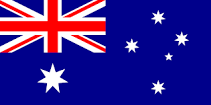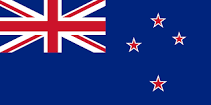Many regard Seisan to be the oldest existing form in Okinawan karate. It is unique because it is perhaps the only traditional form that was practiced in the all three major Okinawa styles; Shuri-te, Tomari-te and Naha-te. Variations of Seisan can be found in almost every major ryuha (style) and no-one can truly say that their version is the true correct version.
Being regarded as, arguably, the oldest Okinawan form and having a unique lineage tracing back to all three major Okinawan styles, Seisan is both well-loved and well-researched. All this again leads to one thing – debate – and with no written Okinawan records to clarify any theory 100%, people can only speculate best on the evidence they can accumulate.
There are varying schools of thought relating to Seisan’s name. To begin, let’s look at the formation of most karate kata. Many of the old masters of Okinawa-te would travel to live and train in China. There they would learn Chinese forms and bring these back to Okinawa, reshaping stances, hand techniques and movements to suit them to their indigenous style. In essence they were taking the best of Okinawa-te and Kung-fu to create the first styles of kara-te. Seisan however is believed by many to be its true Chinese name as Tiger Style Qu’an-fa (Tora kenpo) still has a form called Seisan, though it is much longer and more complex than all Okinawan versions. Believers of this theory back it up by the fact that a number of Okinawan masters who traveled to China all ended up teaching it under the same name back in Okinawa and all had a very similar embusen (lines of movement).
The Lineage They Put Forth Is As Follows:
In the mid 1800’s Bushi Matsumura studied in China and there is a version of Seisan attributed to him (Shuri-te).
In the late1800’s Kanryo Hiagonna studied in China and the Goju Ryu, To’on Ryu and Shito Ryu Seisan traditions are all attributed to his teachings.
In the late 1800’s, Kanbun Uechi (founder of Uechi-Ryu) studied in China and the
Uechi-Ryu Sesian traditions is attributed to his teachings.
This seems very plausible but there are many who disagree strongly and bring heat to the debate of this great kata. These researchers claim that Seisan (or Seishan) has no relation to the tiger form of the same name and was actually named by Okinawans, naming the kata after a famous Chinese martial artist who lived on the island of Okinawa around 1700 and practiced the kata there. It is said that he was one of the greatest karate men of that era.
They not only back this theory up, they raise some doubt to the other popular theory. Prior to the Okinawan masters traveling to China, each was proficient in Okinawan-te and could easily have learnt the kata prior to their pilgrimage.
Take the Shuri-te lineage of Seisan that is credited to Bushi Matsumura. Matsumura did study in China as stated above, but the kata is linked back to astronomer and map-maker Takahara Perchin. Takahara was the first teacher of ‘Tode’ Sakugawa (Matsumura’s first master in Okinawa). This implies that Matsumura learnt the kata long before traveling to China – therefore possibly linking it back to the man, Seisan (seishan).
Now take the Naha-te lineage of the kata credited to Kanryo Higaonna. After training in China he formed Naha-te and introduced to this style many of the kata we practice in Go- Kan-Ryu). Prior to Higaonna’s travels, his Okinawan instructor (master Seisho Aragaki) was already teaching him Seisan kata in Okinawa. Aragaki was a member of the aristocracy and a close confidant of the Ryukyu King. This meant he was in regular contact with Bushi Matsumura and they most likely trained together. It is probable that Aragaki either learnt the kata from Matsumura (as we know Matsumura’s lineage with this kata) or that Aragaki already knew his version and they exchanged ideas.
So when one considers the age of kata Seisan, it is most likely that all learnt the kata prior to their studies in China.
There is also debate over the interpretation of the Japanese translation of Seisan. The Japanese kanji is made up of two figures, the first ‘Sei’ translating as ‘10’ and the second ‘San’ as ‘3’. So it is generally translated as ‘13’ (the number for good luck in China) or as ’10 hands and 3’, symbolizing 10 fighting sequences where most techniques are repeated 3 times.
Yet with this in mind, two things must be noted: Firstly, Kata were not written in kanji until they reached Japan, so no-one can say if the Japanese name or translation is correct. Secondly, there are two popular kanji interpretations, both with different translations. This is not uncommon in kata, as Seiunchin for example has four majorly different kanji interpretations, each with a different meaning).
As previously mentioned, Seisan heavily utilises sequences of techniques repeated three times. It has a broach range of hard and soft techniques, representing a complete arsenal of punching, kicking, striking, locking, throwing and strangling. Unusual techniques are included, and it includes releases (hazushi waza) from bear hugs and body holds.
Many of the applications of Seisan are really quite brutal. This is not a punch/kick/block kata. The techniques in this kata range from locks and holds, to nerve strikes and even a couple of examples of a rarely employed technique that is similar to what modern street fighters might call ‘fish-hooking’
Final note: Gichin Funakoshi (of Shuri-te lineage) who introduced karate to Japan changed the name of Seisan to Hangetsu (also a kata of Go-Kan-Ryu) for his Shotokan style. While the name was changed, by this time, the Shuri-te lineage of this kata had also greatly changed the techniques, embusen (performance lines) and even stances.



